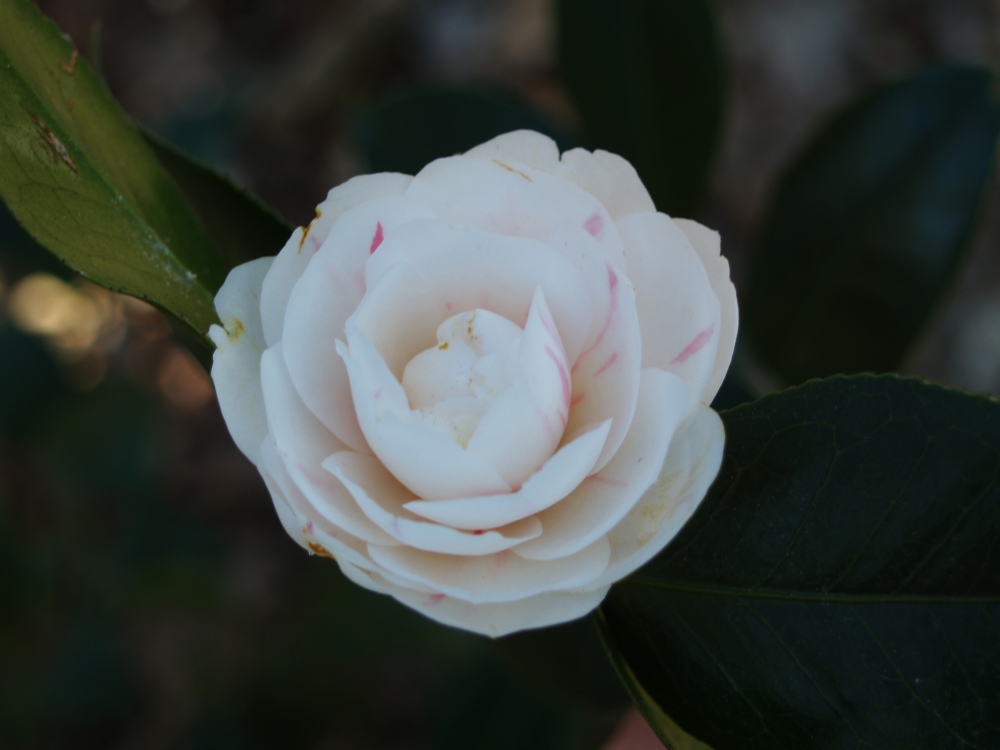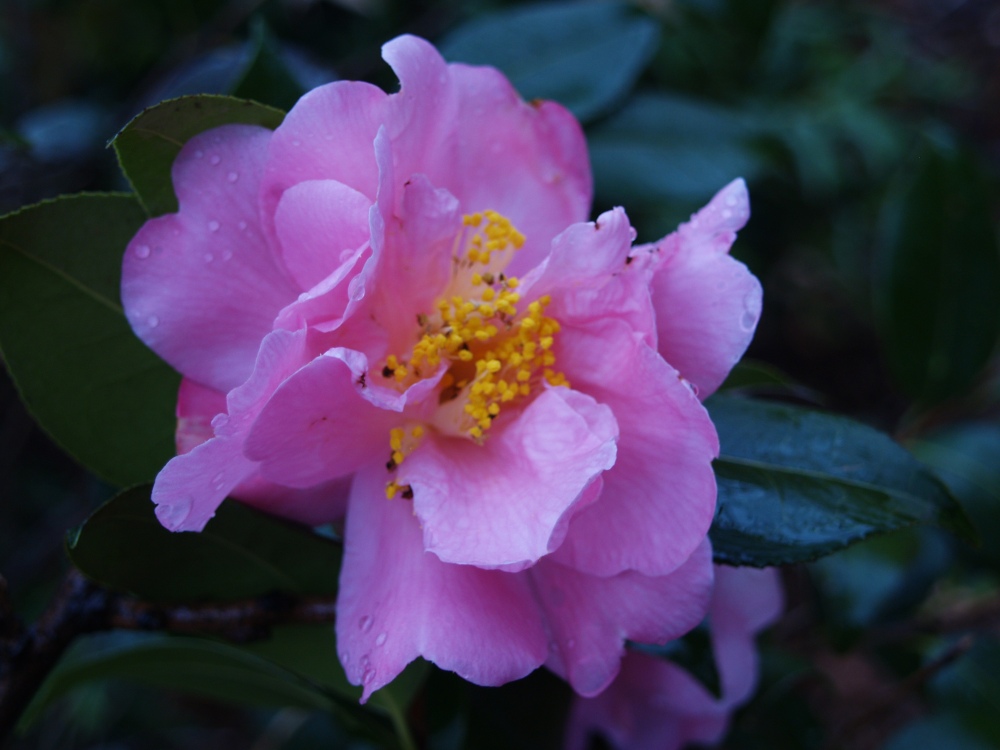Frost, then freezing temperatures on recent nights has turned soft stemmed perennials in the garden to mush. Following this short period of cold, flowers of reblooming azaleas (‘Autumn Sundance’ Encore azalea, below) hang limp, though buds and flowers that have not quite opened are not damaged and these will continue to bloom so long as nighttime temperatures remain above freezing. Many of the Encore azaleas are late in blooming, but the buds are fat and a few scattered flowers promise that there will be more if the weather returns to seasonal norms.

In autumn, periods of cold are typically brief, and certainly are not sufficiently cold to damage flower buds of azaleas and camellias. While many of the Encore azaleas are tardy, hybrid camellias ‘Winter’s Star’ and ‘Winter’s Snowman’ display a few scattered blooms in late October. With thicker substance, the flowers show only a bit of freeze damage along the edges. Peak bloom for the hybrid camellias is typically in November in my garden, and then there will often be intermittent flowers through warm periods in December and January (and sometimes February).

I don’t intend to be pushy, but there seems little reason for any gardener with a few feet of partially shaded ground not to grow at least one of the autumn flowering camellias, and planting several of these gems is even better. These are sturdy, low care evergreens with pleasant, glossy foliage and a form that is easily managed, but the large blooms are their most worthy enticement.

In my garden, the winter is too long for my liking, so any flowers that help to fill this void are treasured. Besides late blooming azaleas and camellias, I’ve planted mahonias and witch hazels, and then late winter flowering bulbs and perennials to maintain my cheer until spring. The flowers of the cold hardy, hybrid camellias make the biggest show, but buds that open at intervals through the winter also provide a bit of mystery. ‘Winter’s Interlude’ (in particular) rarely flowers in November as it’s supposed to, and fat, swollen buds showing a glimpse of pink seem to open randomly through January or February. Or not, since some years the buds don’t open at all. While other winter flowers are fairly predictable, the camellias show no pattern and so they are greatly appreciated when they do pop out.

When I first began gardening, camellias as a group were considered too tender, and with good reason since occasional temperatures below zero were typical through the winter. The autumn flowering Sasanquas were not cold hardy for my northwestern Virginia garden, and most are still too tender despite having few days that even approach zero. The spring blooming Japanese camellias survived the cold winters, but flower buds were often damaged, and blooms were rare even when the shrub survived. More recently, the National Arboretum hybrids I’ve planted are not bothered by any cold I’ve experienced over the past few decades, and flower buds are seldom damaged, even in the coldest periods.

One variety or the other doesn’t matter much to me. All are splendid in bloom, and carefree otherwise. ‘Winter’s Star’ is the most prolific bloomer in my garden, but I suspect this is merely a consequence of being placed in a spot with just enough sun. With more shade buds are more scarce, and without sunlight they are often delayed into the winter, and then it’s a gamble if they will flower at all.